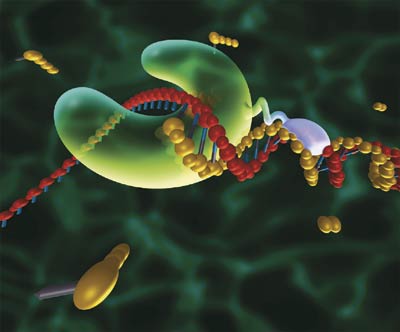Team:Cambridge/Gibson/Protocol
From 2010.igem.org
(Difference between revisions)
(→Step 3: PCR) |
(→Step 3: PCR) |
||
| Line 16: | Line 16: | ||
*This step can take a while, so Gibson Assembly requires some planning ahead | *This step can take a while, so Gibson Assembly requires some planning ahead | ||
| + | {{:Team:Cambridge/Templates/RightImage|image=Phusion.jpg|caption=Phusion Polymerase}} | ||
==Step 3: PCR == | ==Step 3: PCR == | ||
Revision as of 20:18, 23 October 2010

Gibson Assembly: Protocols
The formal paper in nature describing Gibson Assembly can be found [http://www.nature.com/nmeth/journal/v6/n5/full/nmeth.1318.html here].
Step 1: Design Primers
- If you wish to ligate two pieces of DNA using Gibson they must be altered so as to have 40bp of overlap at the point of ligation.
- The standard way to do this is with PCR with specialised primers
- We have designed a tool to help you do this: [http://www.gibthon.org Gibthon]
Step 2: Order Primers
- This step can take a while, so Gibson Assembly requires some planning ahead
Step 3: PCR
PCR is a dark art, but we have found that these general principles have served us well over the summer.
| Step | Temp | Time |
| 1:Initial Melting | 98°C | 30s |
| 2:Melting | 98°C | 10s |
| 3:Annealing | Tm°C | 15s |
| 4:Elongation | 72 | 45s/kb |
| 5:GoTo step 2 | 30 times | |
| 6:Final Elongation | 72°C | 7m30 |
| 7:Final Hold | 4°C | ∞ |
Step 4: Gibson Assembly
- Prepare Master Mix
- Add DNA to be ligated and Master Mix in volumetric ratio 1:3
- Incubate for 1 hour at 50°C
e.g. If you were ligating two fragments (A and B) you could put:
| 2.5µl | fragment A |
| 2.5µl | fragment B |
| 15µl | Gibson Master Mix |
Step 5: Transformation
 "
"
